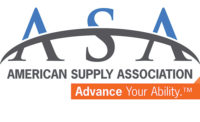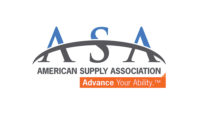ASA to launch codes and standards committee

The American Supply Association officially has launched its Codes and Standards Committee. The scope of the Codes and Standards Committee is to review and discuss plumbing, HVAC, hydronics and PVF codes, as well as standards and regulatory activities.
The Codes and Standards Committee will submit and review public proposals submitted to the model codes such as IAPMO, ICC and NFPA. Overall, the Codes and Standards Committee will discuss issues that affect ASA and its members. The committee will be governed by the ASA Regulations Governing Consensus and will consist of manufacturers, distributors and suppliers for the plumbing, HVAC and PVF industry.
Distributors are those who serve as the intermediary entity between manufacturers and suppliers/vendors, retailers, contractors or end-users. Suppliers, also called vendors, provide goods and/or services to other companies; the terms supplier and manufacturer can be used interchangeably as manufacturers can also serve as suppliers.
Currently, there are many codes and standards committees in the industry. So what differentiates ASA’s committee from the others? Some committees focus only on a particular sector such as suppliers, distributors or manufacturers. Others focus on one area of the industry such as plumbing, hydronics, HVAC or PVF.
ASA members, however, consist of not only a large number of distributors, but manufacturers and supplier partners as well. This unique quality of ASA membership provides key opportunities for the committee to address a wide range of topics. It is a quality that ASA members can take advantage of by participating in the discussions or by being a member of the committee.
For example, manufacturers would be interested in the discussions as the views of their biggest customers — distributors and suppliers — are heard. The ASA Codes and Standards Committee will play an important role in an effort to join the voices of distributors and suppliers with those of the manufacturers.
Other times there are products that hold a double listing such as plumbing and hydronics. There could be a pipe or fitting standard that can be used for plumbing and also be applicable to hydronics. These are issues that can be addressed during the Codes and Standards Committee meeting because the committee is not tied to only a particular area of the industry.
The Codes and Standards Committee will address proposed changes to the model codes. For example, if the model code is revised to require a particular listing, the manufacturer of the product may not have an issue since they will essentially have three to five years before it is implemented at the state level.
However, distributors and suppliers may not be aware of such a revision and purchase products that, in the long term, cannot be put in the hands of the contractors or consumers since jurisdictions will not be considering them as “approved” products. The committee will serve as the channel of information to distributors and suppliers so that they are not stuck with products that will be difficult to sell.
Distributors and suppliers may carry products with different listings considered safe and acceptable throughout the nation but are not considered “approved” products per the model codes. Typically, listing promulgators stay abreast with the current provisions and will look for ways to get their listings into the codes.
The technical committee of a particular code may decide to require a certain product
listing if it enhances the code or if it will improve consumer safety. ASA agrees the health, safety and welfare of the consumer always should be a priority. The problem is when there are other existing listings
available in the market that are equivalent in safety but are not considered “approved” because they are not part of the code. The ASA Codes and Standards Committee will be the voice that informs technical committees at the hearings that there are other acceptable products in the market, and by requiring a particular listing it will essentially eliminate the use of other product.
ASA intends to work closely with other organizations such as ASHRAE, ASPE, ACCA, IAPMO and ICC to stay abreast of potential issues so the Codes and Standards Committee is aware of issues before it becomes a proposal, comment or part of the code. This will assure ASA is proactively and cohesively working together to obtain consensus.
This new venture that ASA has taken is an added benefit for ASA members to take advantage of. ASA’s members can rest assured the association is proactively seeking the best interests of its members while at the same time contributing to an industry that we all feel so passionate about.
The Codes and Standards Committee is headed by Hugo Aguilar, P.E., ASA’s director of codes and standards. Hugo can be reached at haguilar@asa.net.
Looking for a reprint of this article?
From high-res PDFs to custom plaques, order your copy today!






